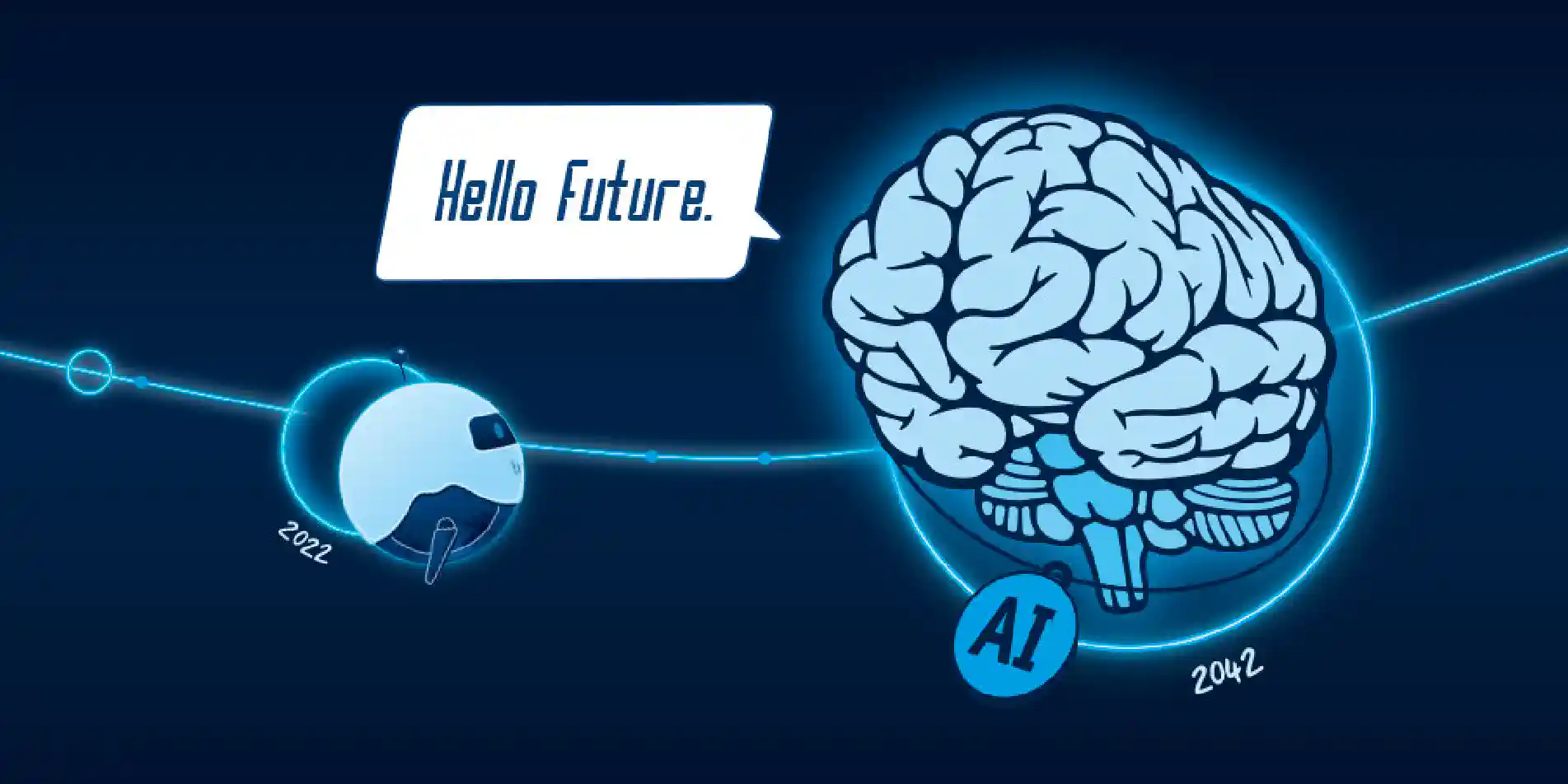
Story 20: asphericon in 20 years
Laptops were still veritable heavyweights 20 years ago. The first digital cameras with a resolution of 3 megapixels were on the market. Although the first hand-held cell phones allowed you to make phone calls, you could not take pictures, write e-mails, surf the net or navigate. On the other hand, you didn’t need to recharge your cell phone battery for a whole week.
Technology has made enormous progress since then. Virtual reality is no longer science fiction, but now experiencing a real technological boom. Artificial intelligence has made its way into our living rooms and everyday lives in the form of voice assistants. The optics sector has also seen groundbreaking developments in the past 20 years. The asphere has evolved from a complicated and exotic lens to a standard in many applications. CNC technology has also experienced a surge in development, with machines capable of autonomous grinding and polishing.
But what will the industry look like in the next 20 years? What futuristic technologies will then be part of the everyday routine at asphericon? We dared to gaze into the crystal ball with Sven Kiontke, Susann Kurschel, Ulrike Fuchs and Alexander Zschäbitz and had a look at what might change at asphericon going forward.
When Sven Kiontke thinks about what asphericon might look like 20 years from now, one particular aspect comes to mind. He suspects it could optimize laser processing. “I can easily imagine that we will interact with so-called “smart laser tools” in the future. They will make it possible to flexibly address a tool library and select the appropriate machining tool for the desired application.” This would help us overcome several challenges currently facing us at asphericon: “When we look at the current state of laser technology, we find lasers that are very powerful. However, we still lack a tool that can scale the energy flexibly and adjust it to suit the respective application, e.g. soldering or grinding. Enormous variations in wavelengths, pulse lengths, pulse rates, and in the energy in general make it difficult to use.” Future smart laser tools, if compatible and versatile, could help solve this problem.
Ulrike Fuchs finds another aspect interesting: the future development of “artificial intelligence”. She thinks that asphericon can look forward to reaping real benefits if it succeeds in making the centerpiece, the CorsS software, learn by itself and weigh up different aspects against each other. We will continue to develop the system’s ability to make independent decisions and solve simple problems in the future – primarily for the benefit of asphericon’s employees. They could then focus more of their efforts on current research and development topics as well as particularly tricky aspects. “This would make results more comparable and free people up,” says Ulrike Fuchs, looking into the future.
Susann Kurschel is focused on optimizing working conditions. The potential of automation could be exploited over the next 20 years to help employees simplify everyday tasks and focus on big challenges. “Automation and AI will assist us in the future” and hopefully make the currently necessary triple shift on our production lines obsolete. “Working a triple shift and changing from one shift to another is exhausting. Anything that make our employees’ work easier would be a real benefit and a valuable thing,” Kurschel explains. This would enable us to offer our employees even better conditions.
Alexander Zschäbitz begins his vision of the future with a wish: “I hope we maintain our spirit of discovery and innovation over the next 20 years.” With regard to asphericon’s service portfolio, he places importance on the question of additional added value. “How can we give customers even more reasons to not just buy the asphere, but rather the complete solution?”
This is something asphericon can already do today. “We can leverage our expertise to offer our customers complete aspheric lens solutions. We’re on the right track with this and it could very well be our daily business in 20 years,” says Zschäbitz, looking ahead with confidence.
No matter what path the future takes, one thing is guaranteed not to change: behind every asphericon product is a great team that will continue to give it their all over the next 20 years and beyond, “putting vision in to practice” – from the idea to the finished product.